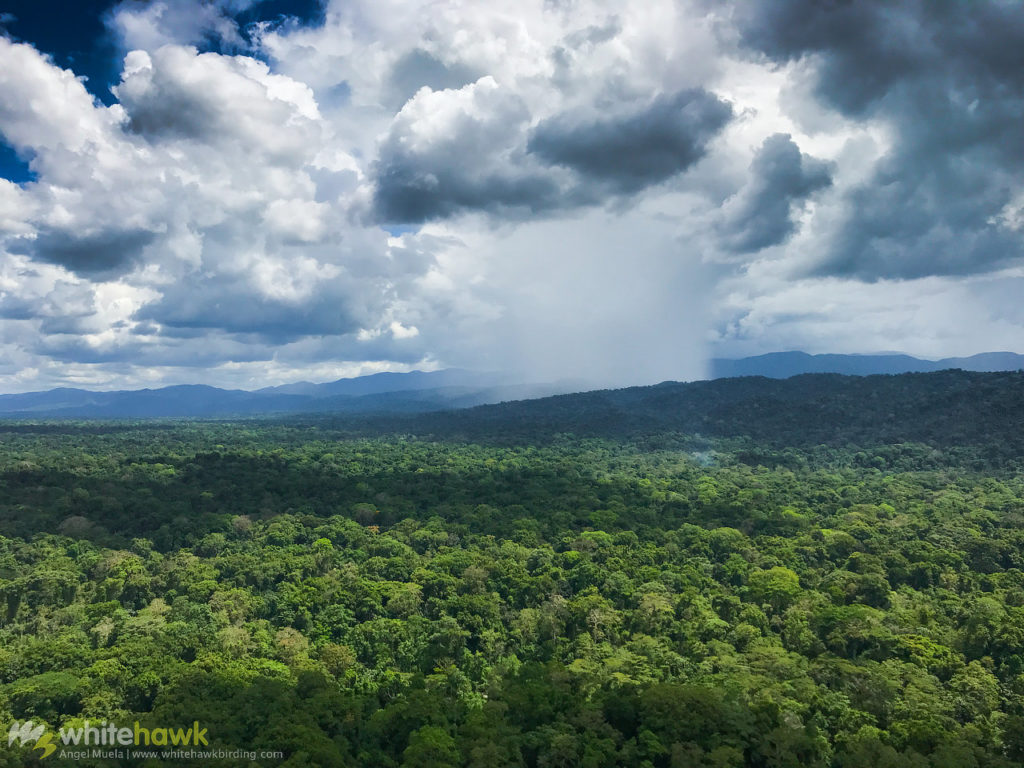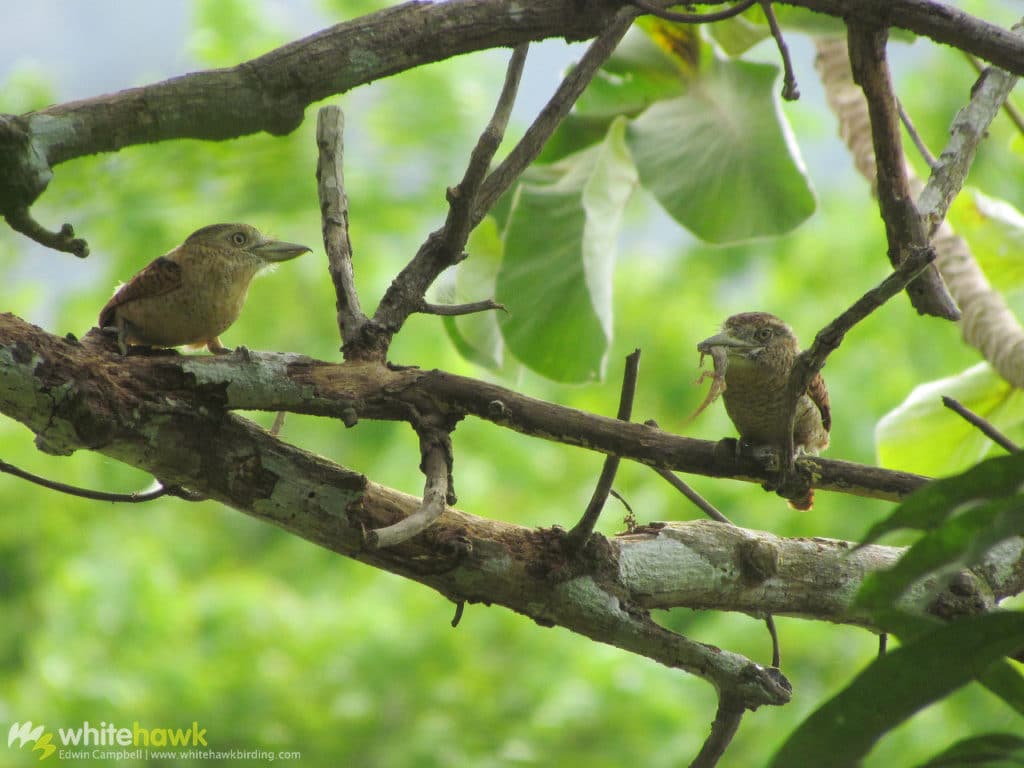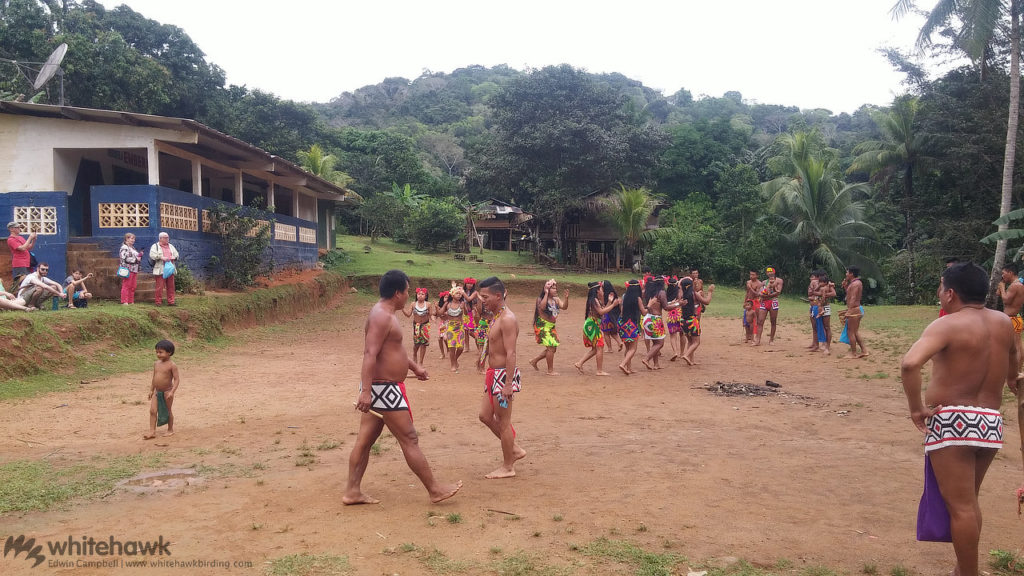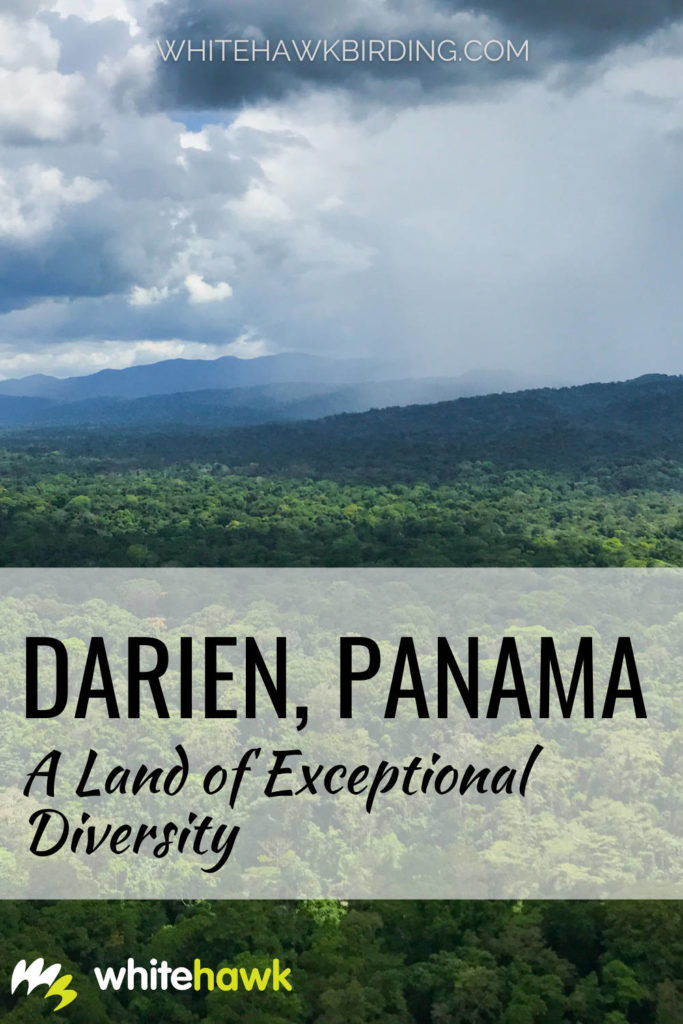I visited Darien, Panama, for the first time, more or less, 10 years ago. At the time, I was working on a conservation project for The Peregrine Fund. My goal for the trip was to help capture and radio tag a juvenile Harpy Eagle. Darien impressed me from the first moment. On the day of the capture, I was walking to the eagle nest when we saw a large raptor land right above us. At first, I thought it was Panama’s national bird. But, this bird was overall very thin and had a long tail. We were observing a Crested Eagle. After that great encounter, we arrived at the nest where we saw a juvenile Harpy Eagle. My first time in Darien and in only a few hours, I had already seen two fascinating eagles.

Darien entices us for many reasons, perhaps most of all because of its high wildlife diversity. It is considered one of the top nature destinations in Central America. This is reinforced by the 1.4 million acres of Darien National Park, a UNESCO Biosphere Reserve and World Heritage Site. This national park has an incredible biodiversity and is refuge for mammals like Jaguar, White-lipped Peccary, Central America Tapir and Black-headed Spider Monkey.
Birds of Darien, Panama
This extraordinary diversity extends beyond the limits of the national park to the rest of the province. According to eBird, Darien has approximately 670 species of birds. Avibase reports a fairly similar number of 705 birds. Some South American birds have their northernmost distribution in Darien, including Double-banded Graytail, Humboldt’s Sapphire, Choco Tapaculo and Yellow-collared Chlorophonia. In addition, other birds have restricted ranges shared between Colombia and Darien. These regional endemic birds are usually classified according to the altitude areas of Darien.

Darien Highland Endemics
Two mountain ranges frame the province, which run parallel from west to east. At the north of the province, the San Blas range connects with the Darien range creating the water divide and the boundary with Guna Yala region on the Caribbean side. Its highest peak is Cerro Tacarcuna with an elevation of 6,065 ft. The other complex of mountains is in the south, and runs along the entire Pacific coast. From Cerro Chucanti (Serranía de Cañaza), which is lost when it reaches the wide estuary of Tuira River (San Miguel Gulf) and reappears as Serranía del Sapo (continuation of the Serranía del Baudo, in Colombia), to Jurado, Pirre, Setetule, and Bagre. Cerro Pirre, at 5,300 ft elevation, is one of the most important mountains of this system. The regional endemic birds of the Darien highlands are:
- Tacarcuna Wood-Quail (Odontophorus dialeucos)
- Russet-crowned Quail-Dove (Zentrygon goldmani)
- Pirre Hummingbird (Goethalsia bella)
- Violet-capped Hummingbird (Goldmania violiceps)
- Tacarcuna Tapaculo (Scytalopus panamensis)
- Beautiful Treerunner (Margarornis bellulus)
- Varied Solitaire (Myadestes coloratus)
- Tacarcuna Chlorospingus (Chlorospingus tacarcunae)
- Pirre Chlorospingus (Chlorospingus inornatus)
- Tacarcuna Warbler (Basileuterus tacarcunae)
- Green-naped Tanager (Tangara fucosa)
Darien Lowland Endemics
Between the two mountain ranges lies the Chucunaque River Valley. This is the largest hydrographic system in Panama with a drainage area over 2.1 million acres. Panama’s two longest rivers – Tuira and Chucunaque – run through it. We can find the following regional endemic birds in this area:
- Choco Tinamou (Crypturellus kerriae)
- Gray-cheeked Nunlet (Nonnula frontalis)
- Dusky-backed Jacamar (Brachygalba salmoni)
- Black Antshrike (Thamnophilus nigriceps)
- Spiny-faced Antshrike (Xenornis setifrons)
- Black-billed Flycatcher (Aphanotriccus audax)
- Black Oropendola (Psarocolius guatimozinus)
- Viridian Dacnis (Dacnis viguieri)
Rich in history, gold and cultures
History
Along with its impressive biodiversity, Darien is a full of history and cultural diversity. The first European settlement on the American continent in 1510 occurred in Darien. Santa Maria la Antigua del Darien was founded at the west bank of the Atrato River (Colombia). It is not clear where the name came from. Apparently it’s derived from the Tarena river (currently Tanela), which flows into the Gulf of Urabá. Afterward, Vasco Nuñez de Balboa began his exploration to discover the South Sea (Pacific Ocean) in 1513 from this settlement. Six years after the discovery of the “South Sea,” the governor of the province abandoned Darien and went to the new coast to find Nuestra Señora de la Asunción de Panamá. Hence, Panama City was the first European settlement in the American Pacific, and is directly associated with the first settlement in Darien.
Gold
The footprints of gold seekers have traveled the paths of Darien. Likewise, gold was the main reason Balboa carried out the expedition to Darien. The discovery of the “South Sea” gave way to the continuous search for “El Dorado” and the conquest of the rich Inca Empire.
In 1665, the gold seekers found an important gold and silver deposit in Darien. The Espiritu Santo Mine at Cana produced minerals until 1912, but in two periods with an inoperative 160-year span. Now, Cana is one of the most productive birding places with a good number of special birds such as Crimson-bellied Woodpecker, Saffron-headed Parrot and Black-tipped Cotinga.
People of Darien, Panama
Pre-Columbian knowledge probably helped in the discovery of gold and the Pacific Ocean. In fact, three indigenous groups remain in Darien: Guna, Embera and Wounaan. We can visit all of these ethnic groups on our tours to Darien. On our way to Darien, we always stop at Lake Bayano in the Madugandi Comarca, a Guna reserve. We include visits to several Embera communities in our itineraries, such as Nuevo Vigia, Pijibasal and Lajas Blancas. We also visit the Wounaan community of Puerto Lara. The people of Darien have an intrinsic connection with nature and desire to protect it around their communities. They are now becoming involved in ecotourism, sharing the local wildlife with us, and benefitting on many levels.

Darien’s cultural diversity does not end here. At the time of slavery many Marrons and freed slaves established themselves in Darien. Yaviza, at the end of the Pan-American Highway, and El Real de Santa Maria on the bank of the Tuira River, are two such communities. We pass through these communities on the way to the National Park and Cerro Pirre. Finally, the settlers (colonos) established themselves in the region around 1950. They are mestizos from other regions of Panama. They arrived looking for new lands to farm and raise cattle.
To sum up, this land has an exceptional diversity of wildlife, people, and a great wealth of history. Above all, Darien, Panama is a place that invites us to walk along its paths in the dense forest, to drive along an “endless” road that ends there, or ride in a “piragua” (dugout canoe) through its winding calm rivers.
~ Edwin


